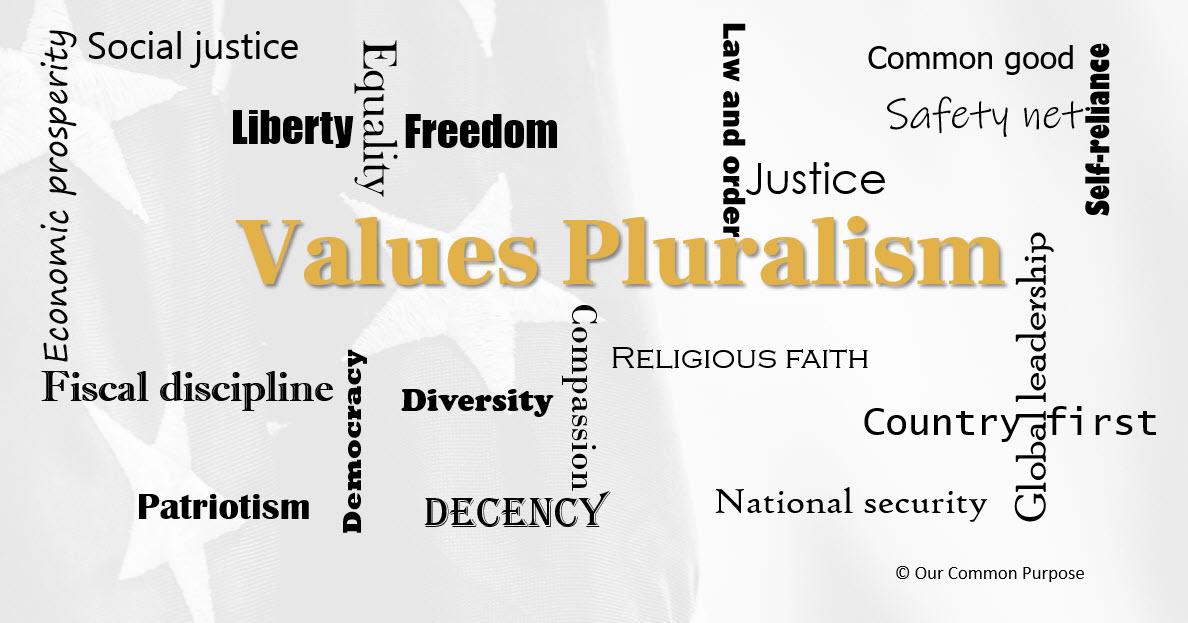Our Key Values Both Unite and Divide

Part I of a series Jan. 19, 2025
Justice. Equality. Democracy. Liberty.
Single, powerful, uplifting words. Each represents a standard by which we guide and judge ourselves. The sum of them is even greater. They define who we are, give us pride in being the United States of America.
And these overarching principles do not stand alone as values that are important to us. Though few of the others reduce themselves to a single word, ideals such as building a better life, law and order, individual rights, and working toward the common good are woven into the American fabric.
These values are expansive. The Founding Fathers thought big and weren’t shy to promise big. But these values are also fractious, inevitably at cross purposes with each other. We cannot have all of one without giving up some of the other.
Such differences are difficult to reconcile, even before partisanship enters in, because most often the good that comes from one is thought of in different terms than the good that comes from another. How can the freedoms that come with liberty be compared in any objective fashion with the responsibilities demanded by equality?
Academics who work in the realm of political theory call this values pluralism. We have a variety of fundamental values that are each important in their own right. Unfortunately, these values unavoidably come into conflict with each other. Resolving these conflicts is confounded by the difficulty — perhaps the impossibility — of weighing the importance of one versus the other.
The classic example is the conflict between equality and liberty. All-in on liberty quashes equality. All-in on equality obliterates liberty. Splitting the difference isn’t easy.
The foremost contributor to this line of reasoning was a fellow by the name of Isaiah Berlin, a Brit who did his most important work in the 1950s. Berlin never became a household name but his words hold tremendous sway among his academic disciples. In the grand tradition of philosophers and political theorists, Berlin argued these notions as theoretical postulates.
We are foolish, however, to leave this merely as an academic exercise. These theoretical concepts have real-world implications that are unrecognized, unappreciated, and as a result go unaddressed. Politicians and every-day citizens like you and me are all the time making tradeoffs among values without realizing, much less coming to grips with what we are doing. Our political debate focuses on the surface issues and fails to identify – or address – the underlying conflicts in our values that are causing these issues to materialize.
Immigration is one hot example. That discussion is usually framed in terms of what to do with the wave of humanity that has overwhelmed our southern border. But more conceptually we should be viewing the discord as a smash-up between the conflicting values of law and order on the one hand versus compassion on the other. Each of these values is intrinsic to the American social fabric.
And yet as is so often the case, we can’t have all of one and at the same time have all of the other. So which is it going to be? All compassion, and no law and order? All law and order, and no compassion? Some portion of each? If the latter, how much of one are we willing to sacrifice in order to gain the other? Clarifying our general intentions by answering questions such as these should then make it easier to understand what we are trying to accomplish with specific rules and regulations.
Our values unite us, and in contention with each other divide us. The conflicts that erupt are inevitable. We would be well served, however, to find a better way of addressing these conflicts, beginning with gaining a better understanding of the underlying role they play in almost every issue we face.
This new initiative of Our Common Purpose looks at American values in a way you haven’t seen before, in fact hasn’t been studied in this way before. The results will be rolled out in series of reports you will be receiving over the next few months.
Next: We hold our values at differing levels of esteem
— Richard Gilman
Part I: Our Key Values Both Unite and Divide
Part II: Some Values Get More Regard than Others
